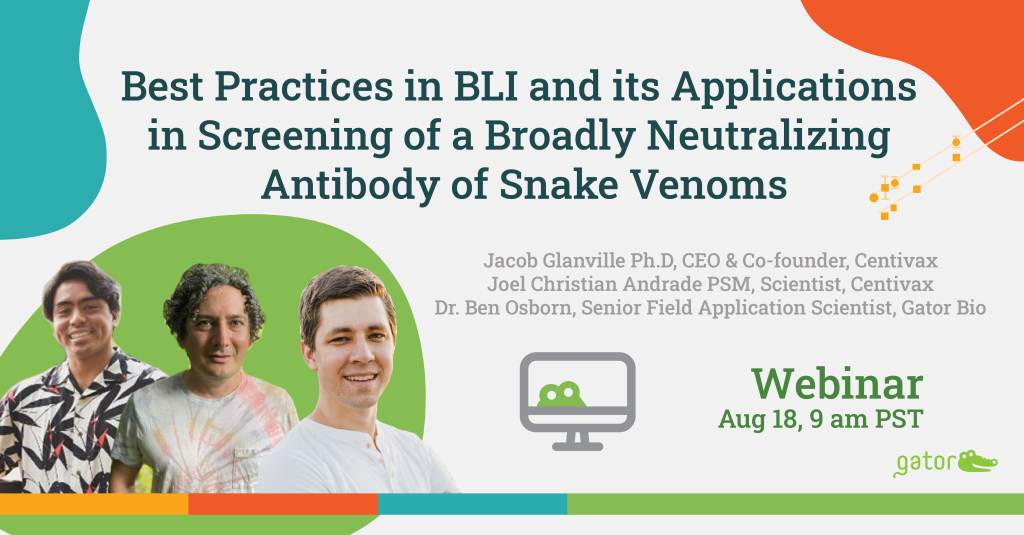Biolayer interferometry (BLI) is gaining popularity for protein and small molecule quantitation and kinetics research. The new advancements in biosensors, ease of use, reproducibility and low cost is driving its adoption. Even though BLI is one of the easiest of the tools, as with many other techniques, getting the best data depends on optimization of some key experimental factors. This webinar will discuss the best practices in BLI and result of such implementation by way of an example of screening of a broadly neutralizing antibody of snake venoms.
Snake envenomation results in over 100,000 deaths and 300,000 permanent disabilities in humans annually. Contemporary antivenoms are produced from the polyclonal serum of venom-immunized livestock and are specific to a single or narrow genetic range of related snakes. Could a broadly neutralizing monoclonal antibody, or a cocktail of a few broad components, provide protection from diverse snake venoms? Centi-3FTX-D09, originating from the B-cell memory of a human subject with an extensive history of diverse snake venom exposure, recognized a conserved neutralizing epitope of 3-finger toxins (3FTXs), a dominant snake neurotoxin. Four crystal structures of Centi-3FTX-D09 in complex with 3FTXs from mamba, taipan, krait, and cobra revealed the mechanism of broad neutralization to be epitope mimicry of the interface between these neurotoxins and their native host target, the nicotinic acetylcholine receptor. Centi-3FTX-D09 provided in-vivo protection against diverse 3FTXs and, in combination with the phospholipase inhibitor varespladib, protection against whole venom challenge for diverse, genetically distinct, elapid species.


